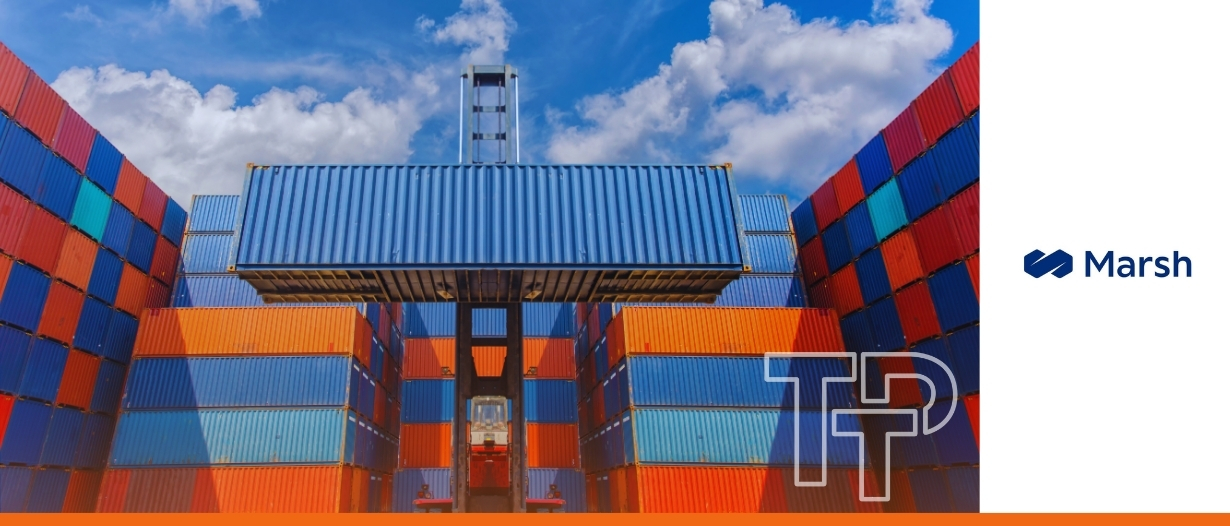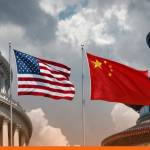Treasury and payments: Rethinking transaction fees in the era of instant everything
Alan Koenigsberg
Apr 27, 2025
 Carter Hoffman
Apr 23, 2025
Carter Hoffman
Apr 23, 2025

Tensions between the United States and China have escalated far beyond a political standoff. Hard tariffs and export restrictions have effectively frozen trade flows between the world’s two largest economies, and the fallout is spreading through global business strategies at every level.
For years, US firms have relied on a predictable stream of critical minerals sourced from China to keep supply chains running smoothly. Now, with China restricting exports and the US seeking to re-shore industrial capacity, the buffer that once allowed companies to plan with confidence has vanished. Tariffs on both sides have created cost pressures and deep strategic uncertainty.
Last week, smartphones received a last-minute exemption from duties, but that could change with a single policy shift. No one really knows what’s next.
To explore the potential impacts of the changing trade landscape and how businesses can protect operations against volatility, a panel of geopolitical and finance experts from across Marsh McLennan’s business groups came together to discuss in a webinar titled, “Navigating geopolitical risk and uncertainty: The impact of changing trade policies”.
Much of the pressure starts with supply chains. When key suppliers operate across borders affected by tariffs, even small policy adjustments cause ripple effects that can take months to absorb. The problem is especially severe for sectors dependent on minerals and components where there are few alternative sources.
To even begin to understand how they will be impacted, businesses must now unravel the layers of their upstream and downstream supply chains, sometimes several tiers deep, identifying where vulnerabilities may be hiding. In the past, getting this information has not always been easy.
James Crask, Global Head of Multinational Clients at Marsh Advisory, said, “If you go through a manual process to do that, you’d have to go and ring up your vendors, ask them who their suppliers are. That process is very slow – it can take years … and sometimes you don’t get an accurate view because your suppliers might not want to be too open about some of the risks that they have hidden within their own supply chain. Or, they may not even know themselves.”
Without knowing where exposure lies, firms are vulnerable to sudden shifts in policy and pricing, and won’t even know they should be proactively exploring options for rerouting production or securing new supplier relationships. When those price hikes come, this could force them to abandon certain markets, or even entire product lines, as supply costs start to outweigh consumer price tolerances.
Thankfully tools exist today (like Marsh McLennan’s Sentrisk) that can help companies better understand their supply chains and model risk exposure under different tariff scenarios without needing to go through the manual exercise.
Full visibility, however, does not eliminate tariff-related supply chain challenges. The number of suppliers in any industry is limited and as firms try to lock in suppliers that are less exposed to tariff regimes, they may crowd others out. The window to act is closing quickly and once those tariff-insulated suppliers allocate their capacity, alternative options may either become cost-prohibitive or vanish altogether for firms too slow to act.
In its article, Trade and trade-offs: Exploring possibilities for businesses, Marsh recommends four steps that businesses can take to help navigate tariff complexities. Among these is the recommendation for businesses whose suppliers could be impacted by tariffs to explore mitigating any resulting losses through credit insurance policies. A well-structured policy could include coverage for defaults related to the negative effects of tariffs.
While there are steps that can be taken to help, the strain on supply chains is real and has already begun to influence how and where organisations deploy capital.
Tariffs are effectively a hidden tax, passed on through supply chains and eventually borne by consumers or absorbed by shrinking margins. No one knows how the tariff levers will be adjusted next.
Given the record trade policy uncertainty, which is fracturing trade relations, and prompting input costs fluctuations, capital expenditure is becoming harder to justify. Interest rates, meanwhile, remain stuck between two priorities. Inflation suggests they should rise, while slowing growth suggests the opposite.
Jayan Dhru, Managing Director, Global Analytics and Advisory at Guy Carpenter, said, “The Fed will have to choose between inflation and growth. And that raises the risk of recession.”
Olaolu Aganga, US Chief Investment Officer at Mercer, added, “What we’ve been saying to clients is that we think the Fed will focus more on growth risks than inflation risks, and the bond markets are still pricing in a few rate cuts this year, which we frankly think is reasonable.”
Still, the uncertainty remains, and many investors are left in limbo, wondering whether to act now or hold steady. Some are choosing to rebalance portfolios globally, moving capital toward markets with more consistent fiscal approaches and lower valuation multiples. Others are reinforcing their existing strategies with diversification across asset classes and geographies, trying to insulate against further shocks.
Another underlying impact of the recent policy reform that has created a confusing paradox is the fact that tariffs act as a form of fiscal tightening (albeit a blunt and erratic one). Growth may be stifled at home, but elsewhere, governments are loosening spending constraints.
Niall O’Sullivan, Global Solutions, Chief Investment Officer at Mercer, said, “In many regions around the world, there has been a … loosening of the fiscal spigots. The best example of that would be somewhere like Germany, where, for a variety of reasons—but in particular, the lifting of the debt brake and the idea that they would look at defence spending—there [has been] a kind of a counter force coming in the other way as these tariffs come in.”
This divergence is causing a two-speed response in global markets. While the US grapples with tariff-induced inflationary pressures and muted growth expectations, other regions are benefiting from increased public investment and more accommodative fiscal policy.
While capital markets may be the first thing that comes to mind when many think about the impact of these new tariff policies, the impact reaches deep into many other areas as well, including workforce planning and corporate operations.
Trade restrictions are reshaping employment, skills demand, and the very nature of work. Companies accustomed to building in low-cost regions are now rethinking where and how they operate, which includes a reassessment of the skills required to make those operations competitive.
Dan Tannebaum, Partner, Global Anti-Financial Crime Practice Leader at Oliver Wyman, said, “The end goal [of the Trump administration’s tariffs] is to make America rich and increase domestic manufacturing. [But] we haven’t been a manufacturing country for 50-plus years. Our workforce isn’t equipped for this.”
This disconnect between policy ambition and workforce readiness places added pressure on organisations to think long-term about labour capability. As production footprints shift, businesses must plan not only for where work happens, but for who will do it, and whether they’re equipped to deliver.
Tauseef Rahman, Partner, Career at Mercer, said, “It’s really about having the workforce with the skills that you need to produce the goods and services that are ultimately traded. … Work is changing. The workforce skills and capabilities will need to be looked at.”
One aspect of ensuring that roles meet the demands of a restructured global trade regime is stronger (and longer) scenario planning. Quarterly cycles will no longer be sufficient for many industries, and some firms like those in the semiconductor space will need to scenario plan decade-to-decade.
Business leaders also need to be sure to include their employees in regular communication. During times of uncertainty, silence breeds disengagement, and often rumours will step in to fill the void. When businesses withhold information about strategic plans, they risk undermining trust at the moment it is most needed.
Rahman added, “Employees should not hear about business plans from the news.”
—
Organisations that invest in flexibility—whether through supply chain intelligence, strategic asset allocation, or human capital development—are better positioned to adapt. They may not be able to predict every shift, but they can be prepared to respond when and how it is needed.
The new opportunity lies in building systems that thrive under tension. Businesses must begin treating uncertainty as a feature of the system, rather than a flaw, and stop assuming that things will return to normal. There’s no new normal.
As the Marsh McLennan webinar showed, there are steps that businesses can take to help themselves prepare for years ahead. They can map risk exposure, diversify investments, engage employees, and embed skills development into their long-term plans.
The global order may be shifting, but so too is the mindset of those ready to lead through change. There are advantages to be found by those willing to build for volatility, not against it.

Alan Koenigsberg
Apr 27, 2025

Carter Hoffman
Apr 25, 2025
Trade Treasury Payments is the trading name of Trade & Transaction Finance Media Services Ltd (company number: 16228111), incorporated in England and Wales, at 34-35 Clarges St, London W1J 7EJ. TTP is registered as a Data Controller under the ICO: ZB882947. VAT Number: 485 4500 78.
© 2025 Trade Treasury Payments. All Rights Reserved.